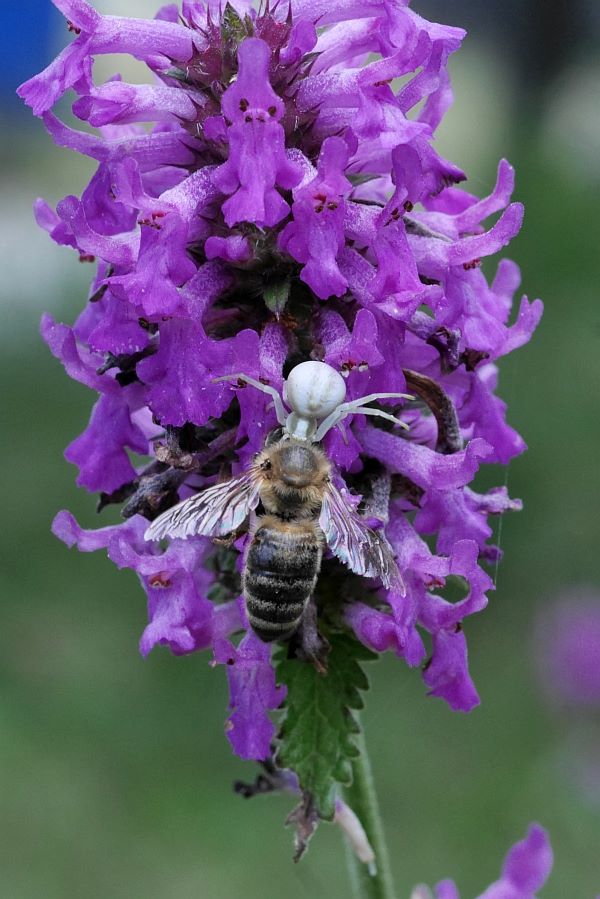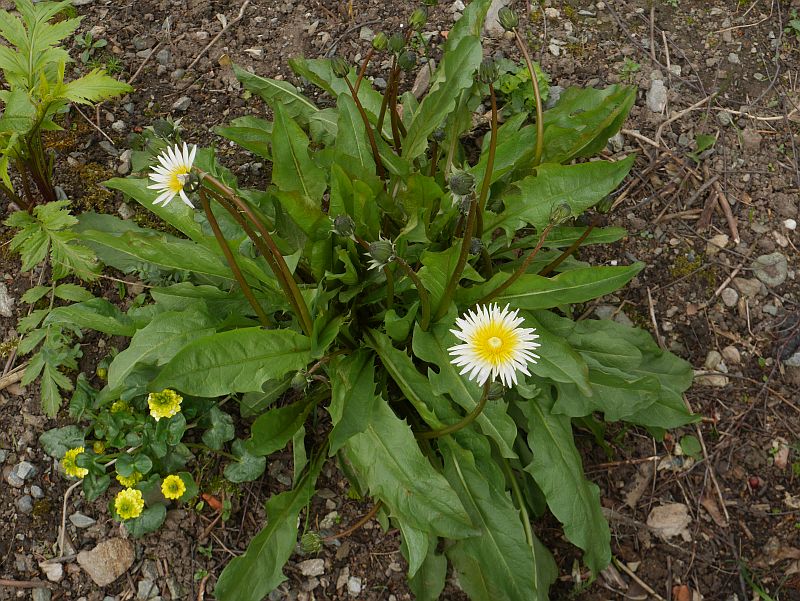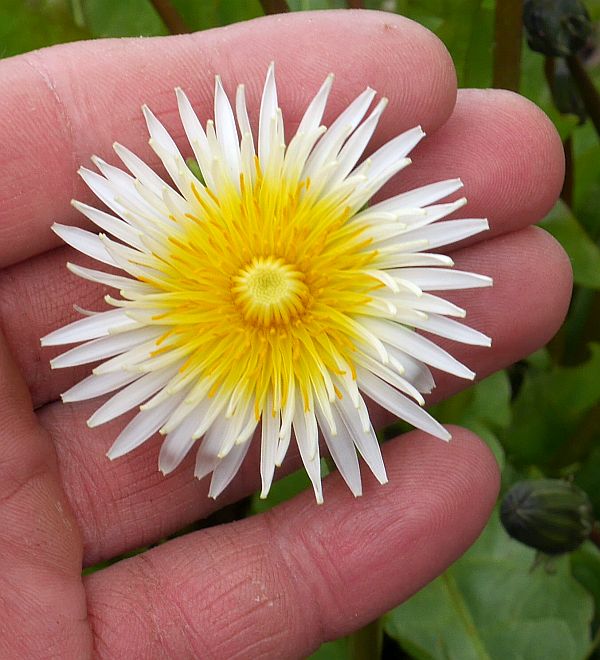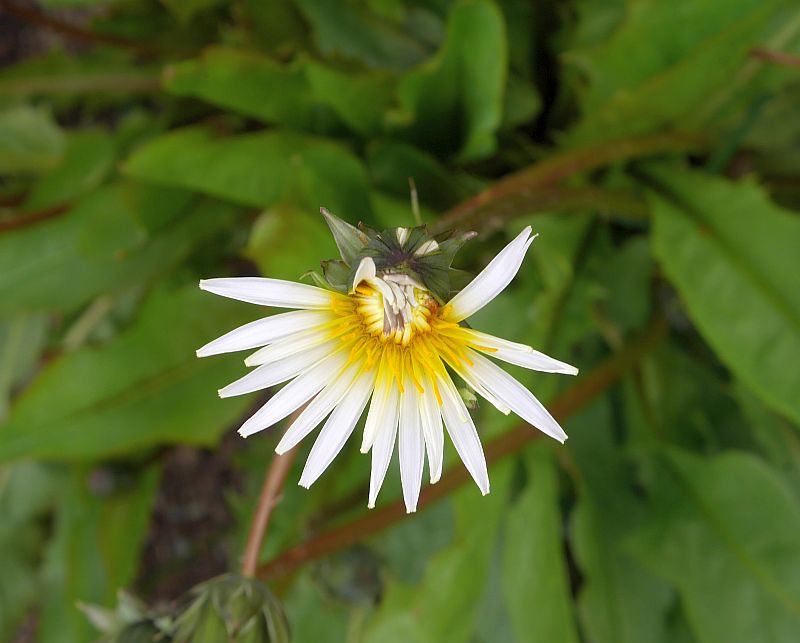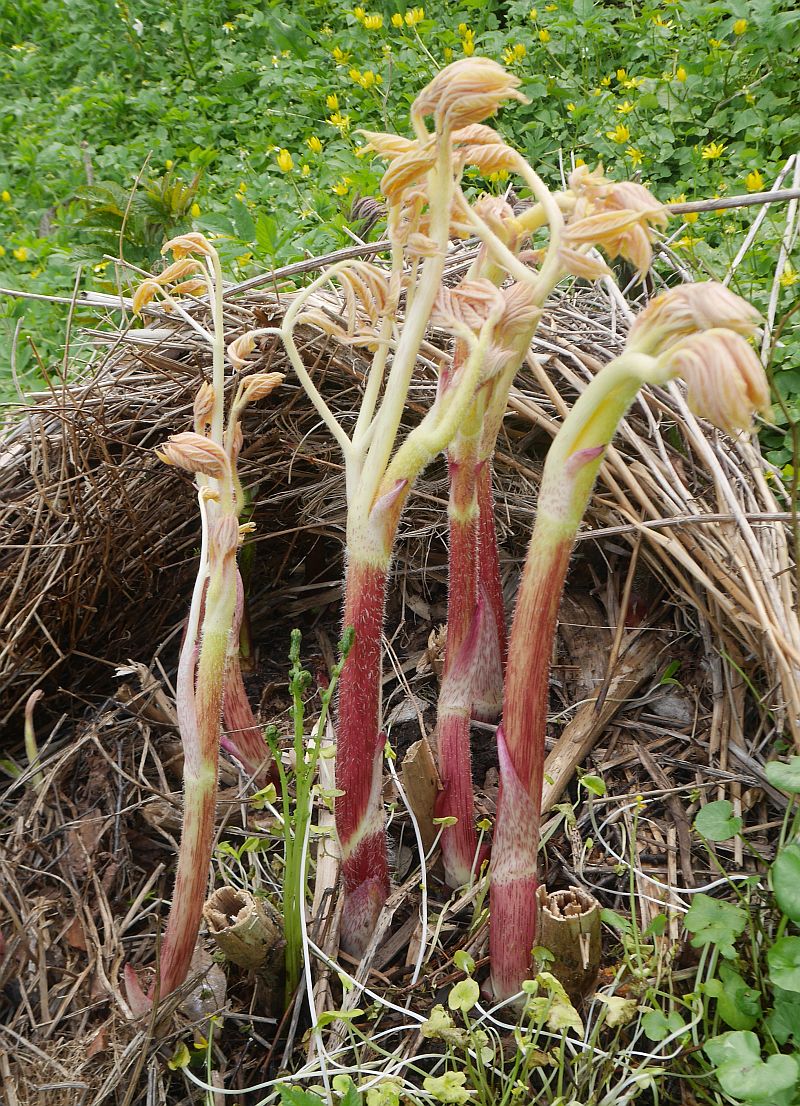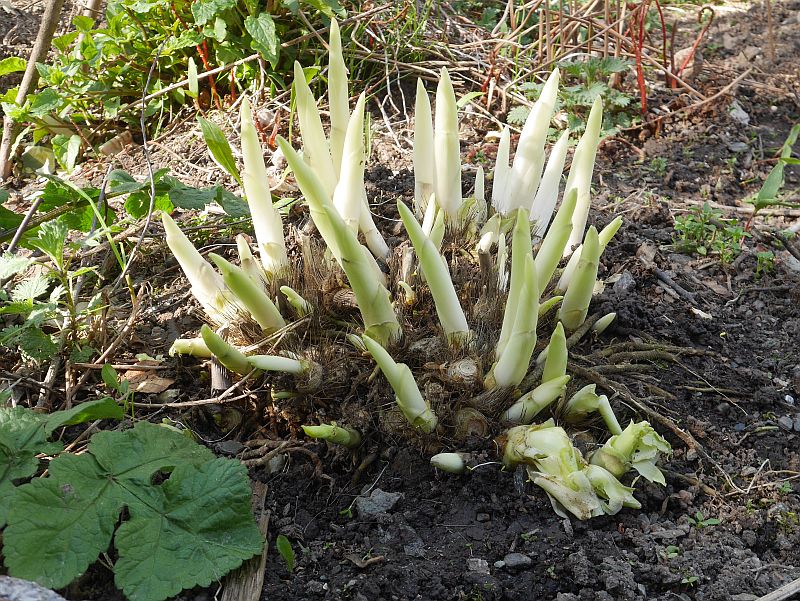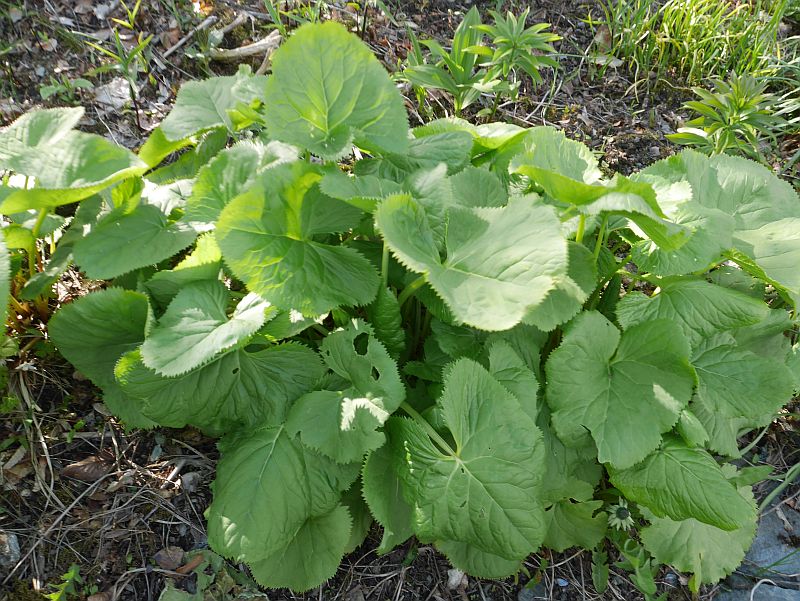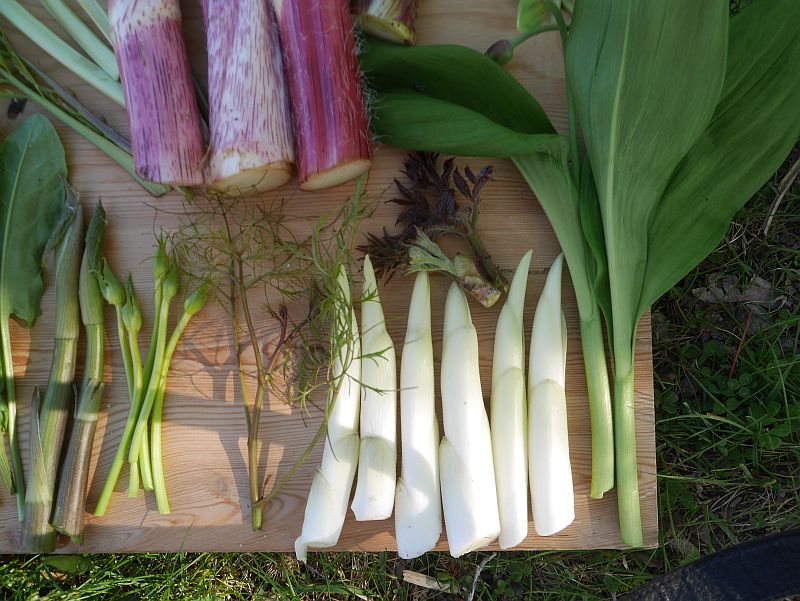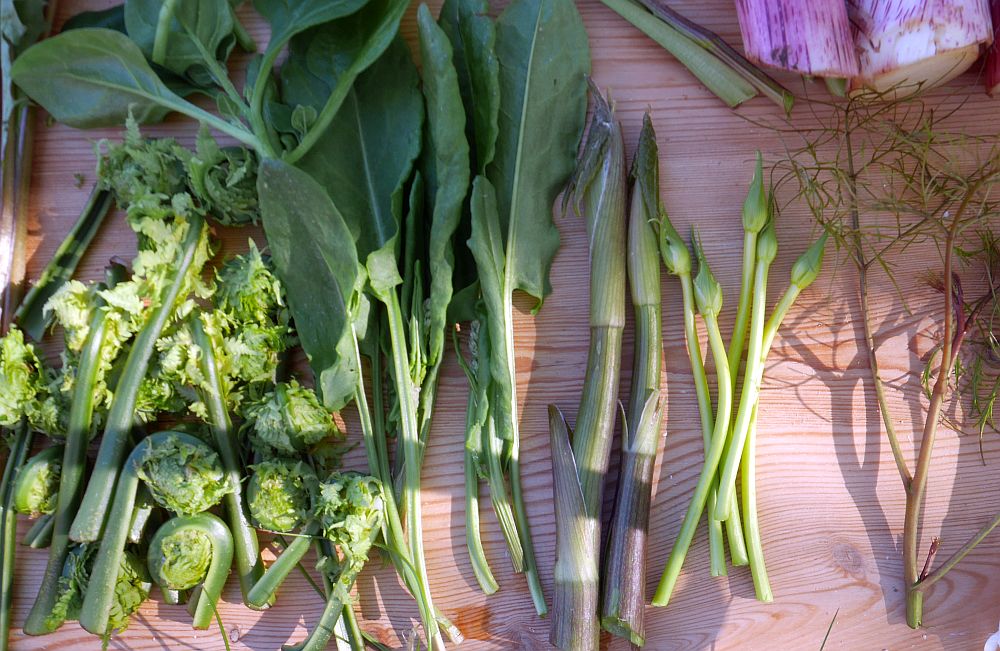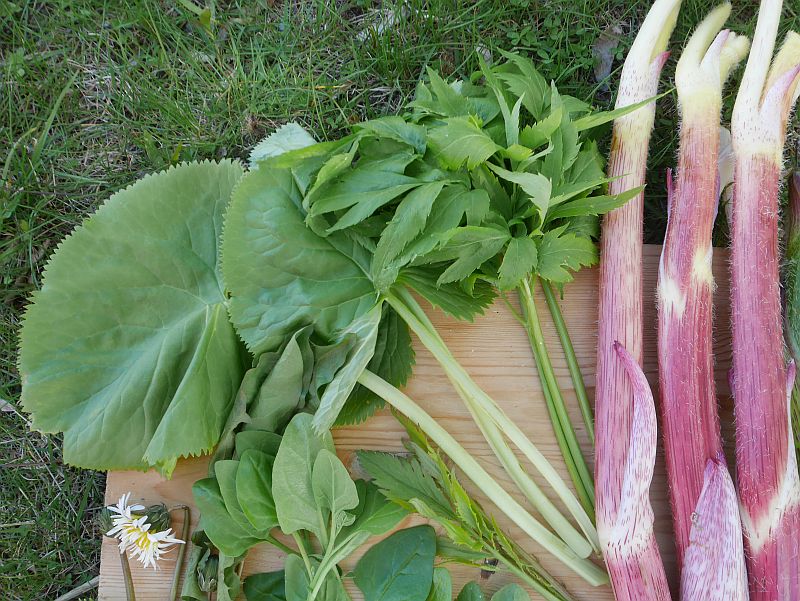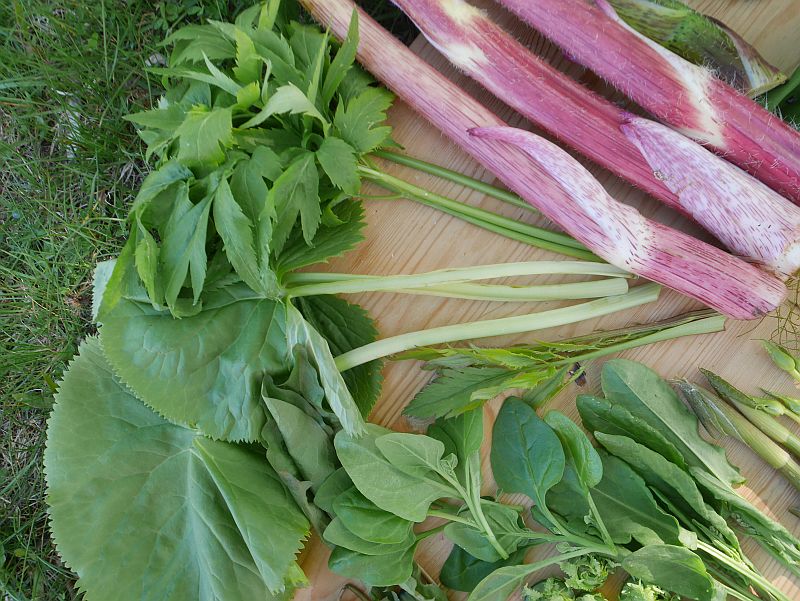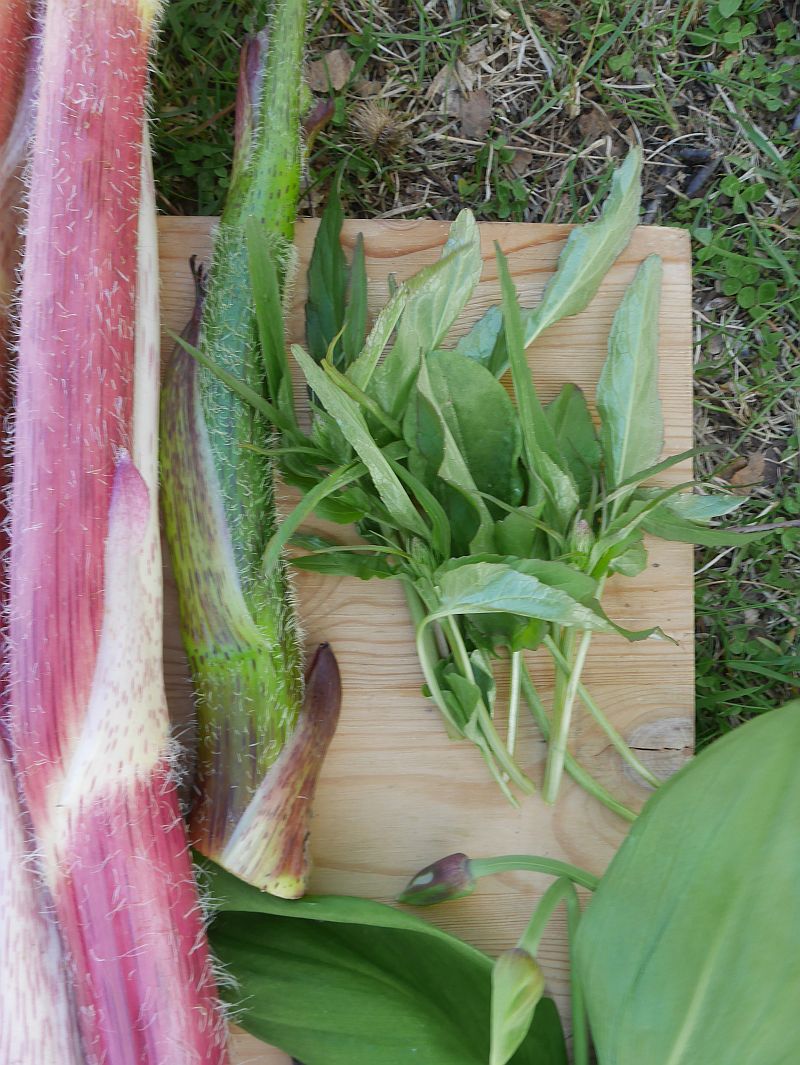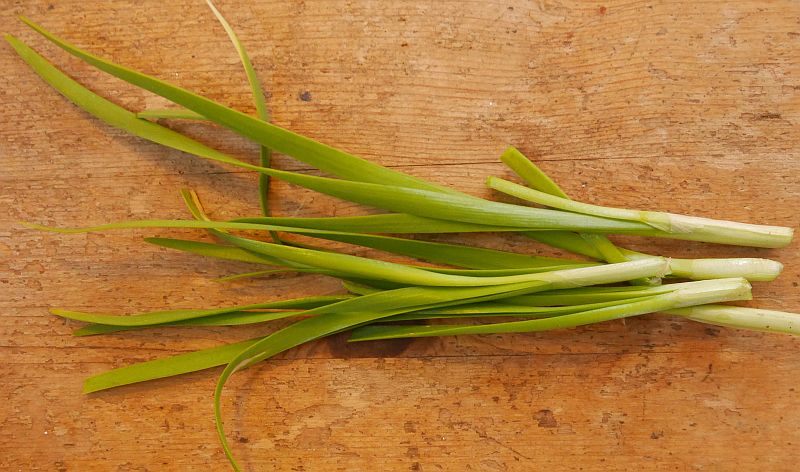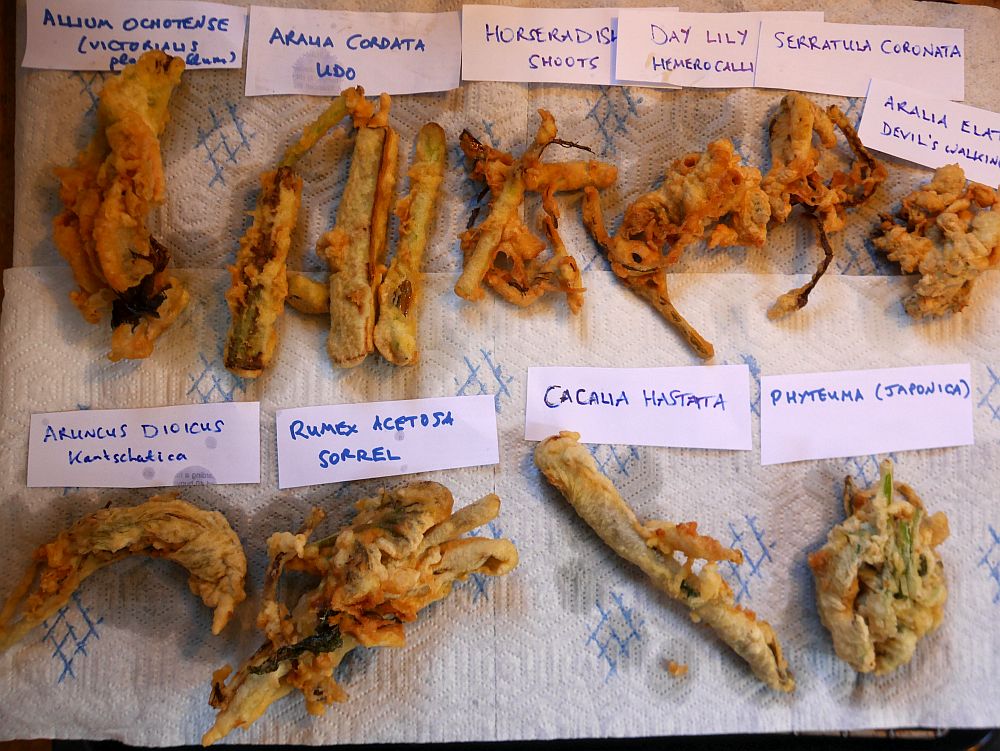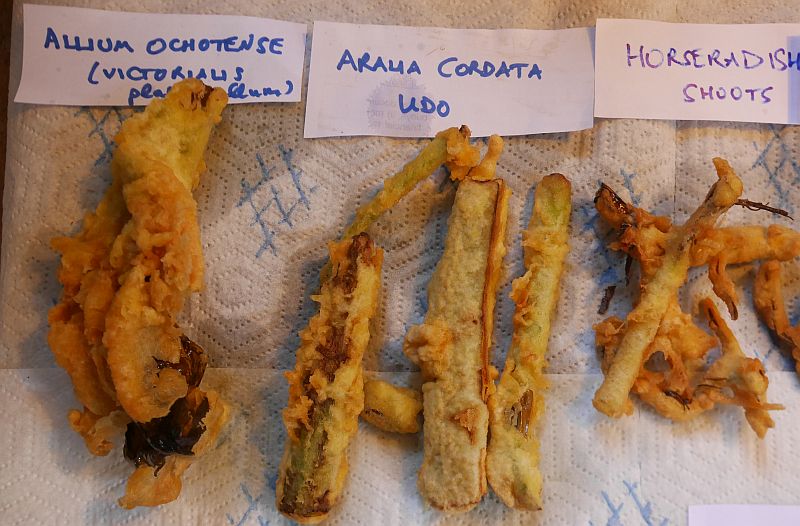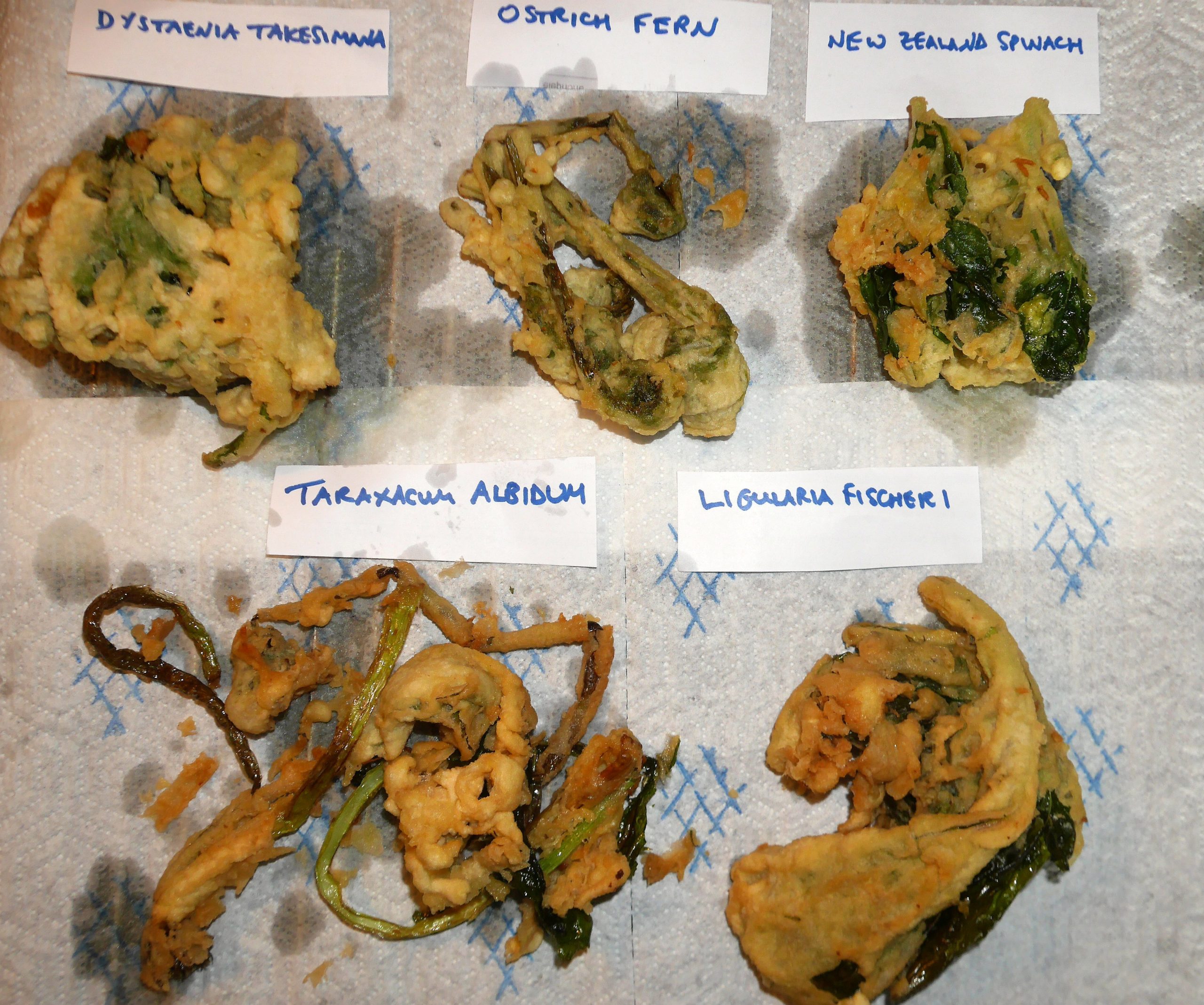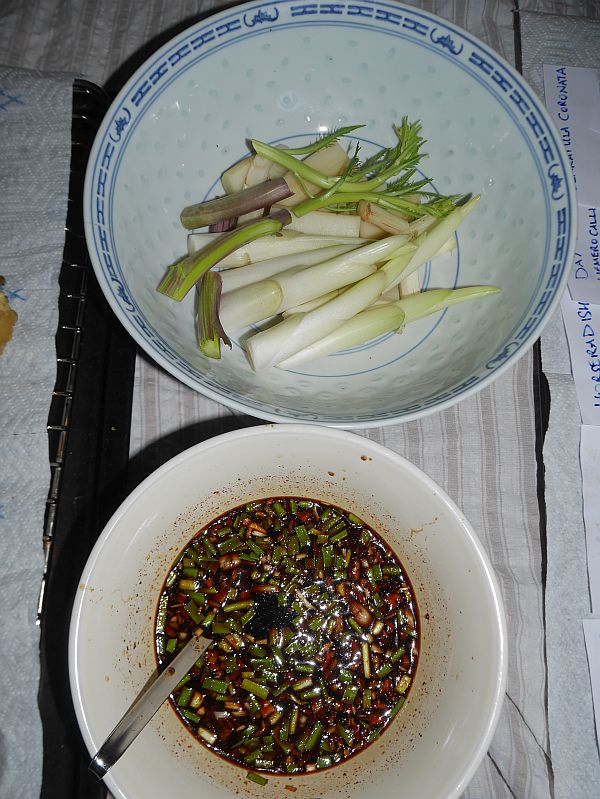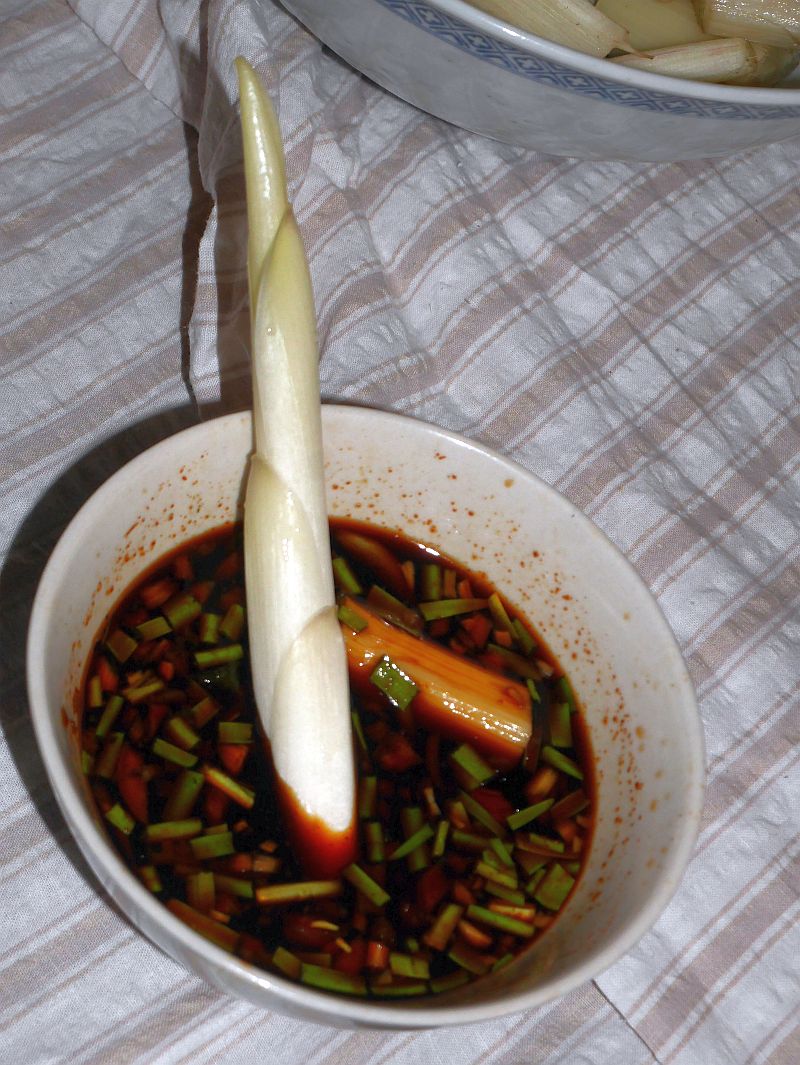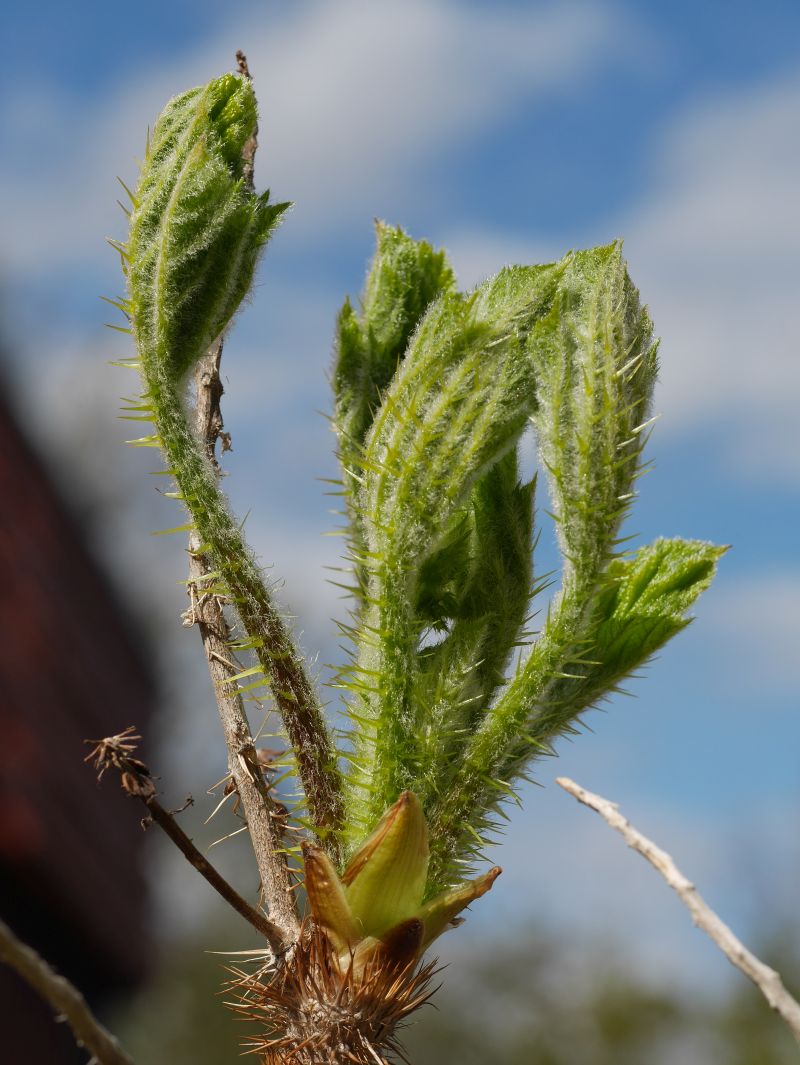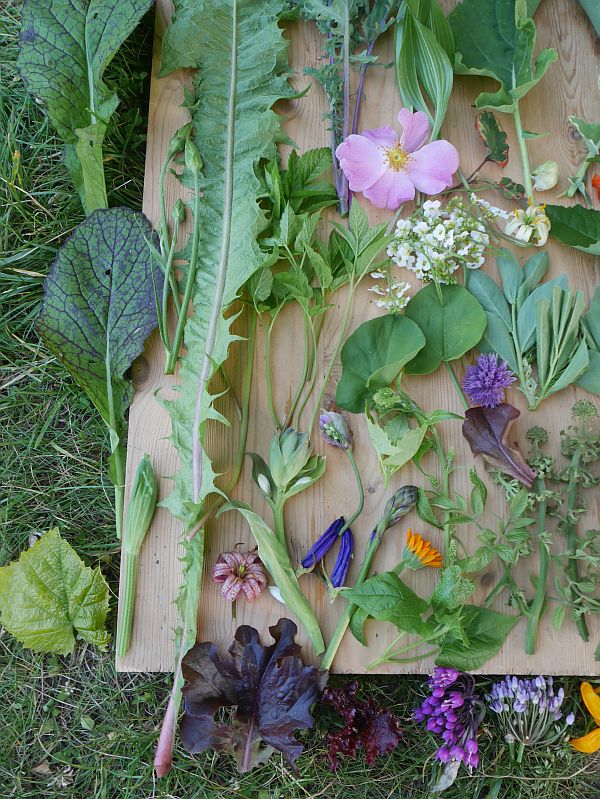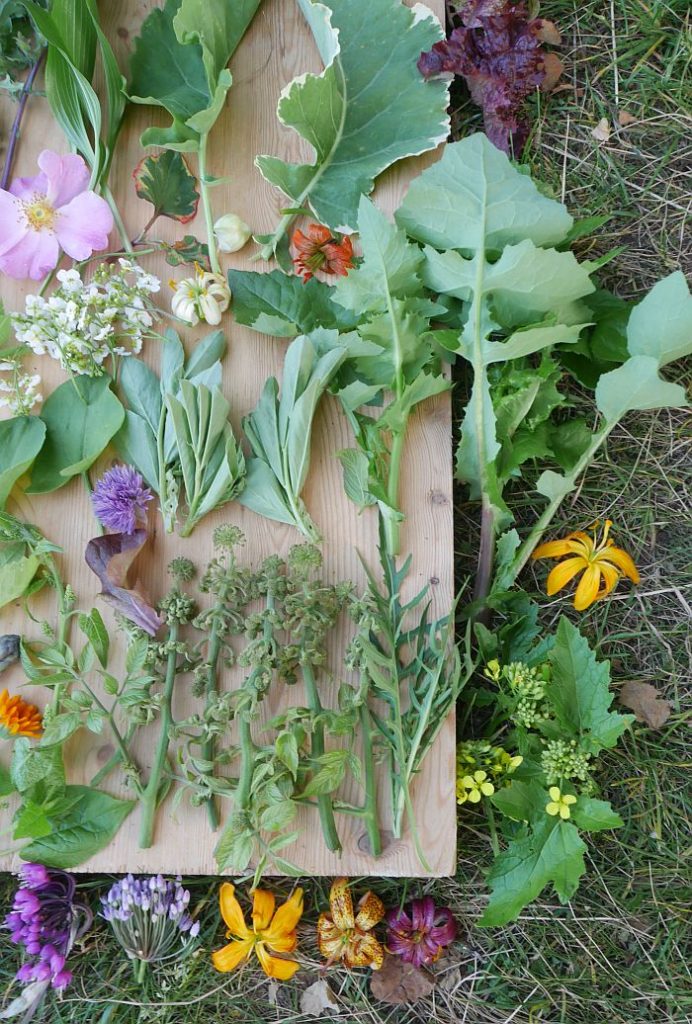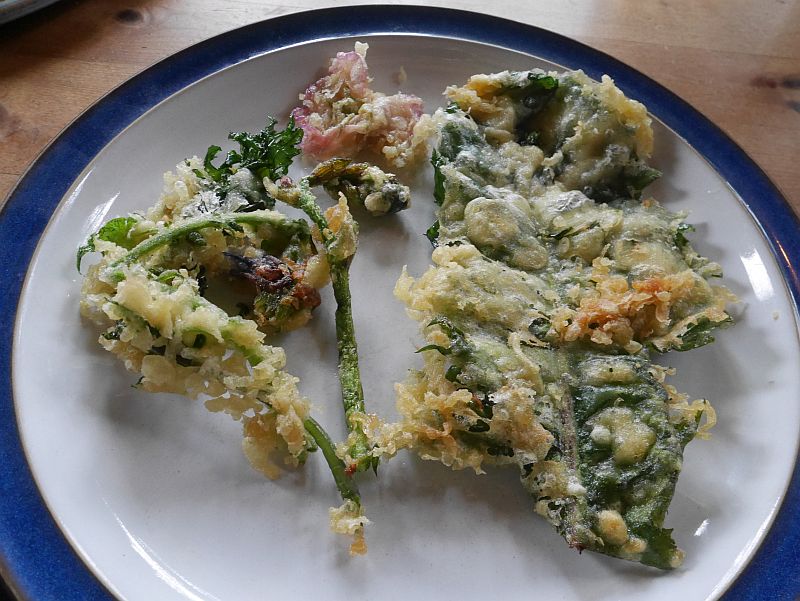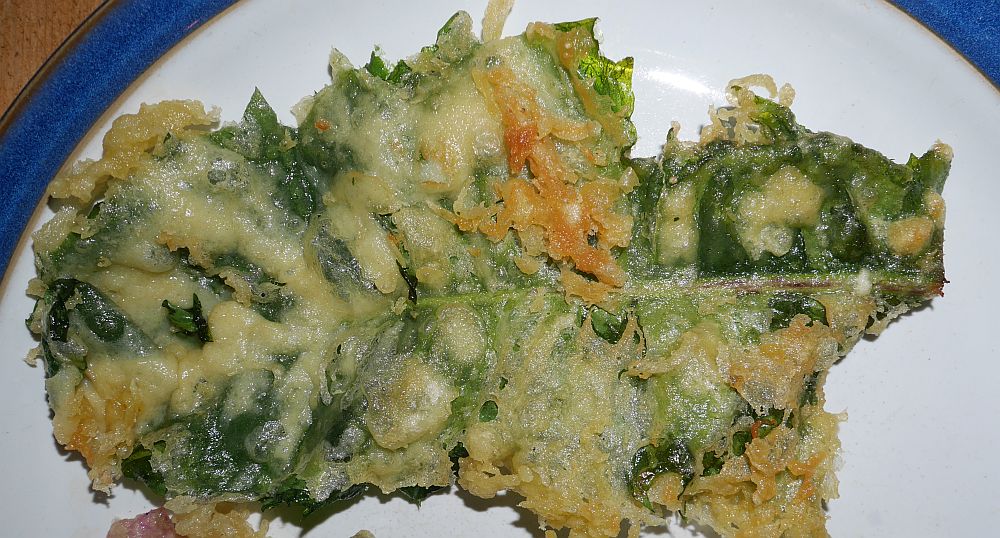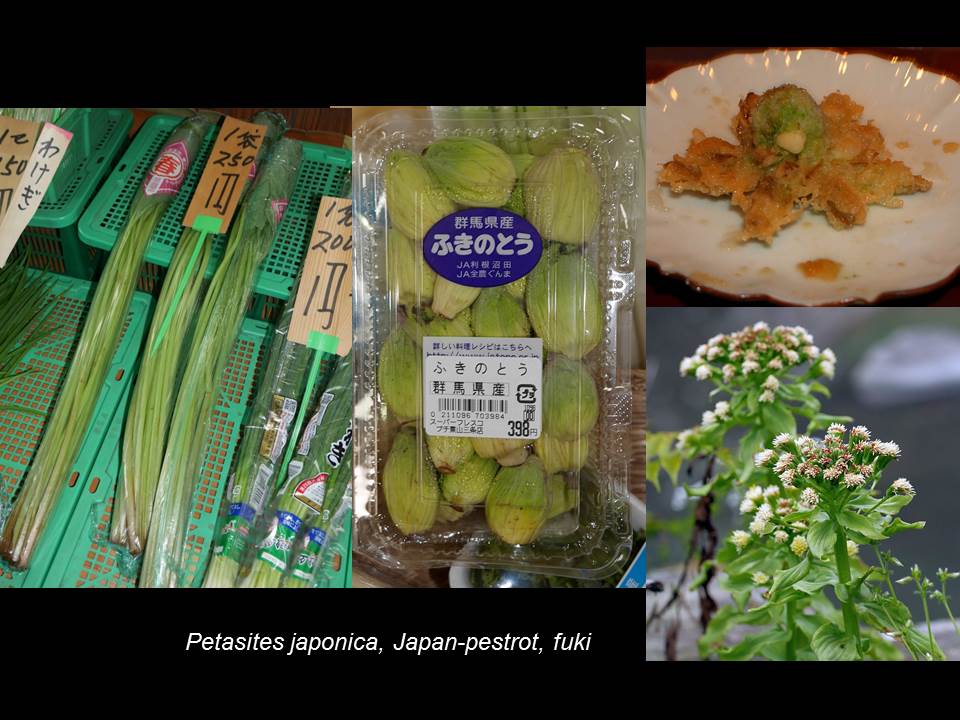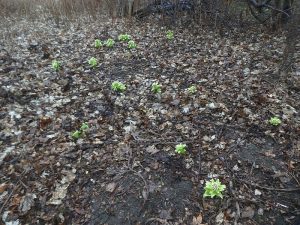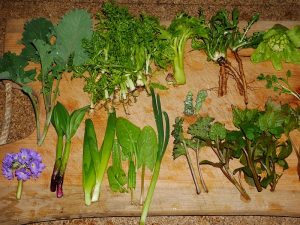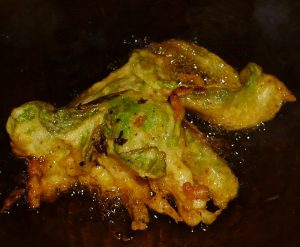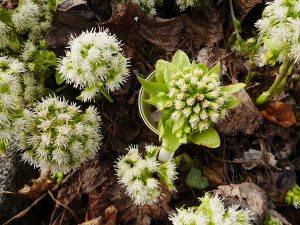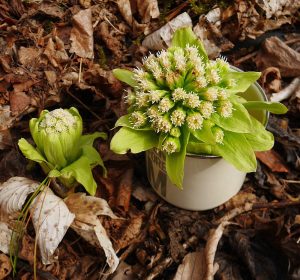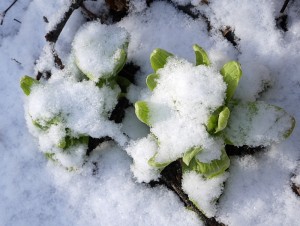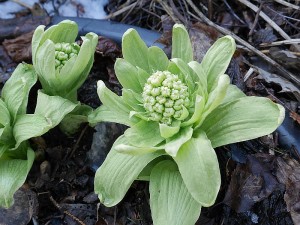Those that have read my book and follow my blog will know how much I love the stories that follow edible plants around the world and discovering those ornamental plants that I had never expected could be used in the kitchen, turning them into edimentals! My book Around the World in 80 plants is full of them!
The plant known as little vegetable garden fish in Brazil is a case in point and I have to thank Kyle Dougherty for alerting to me to this unlikely edible on my Edimentals and Perennial Vegetables Facebook group.
Brazil isn’t a likely place to search for novel edibles that would be hardy enough to grow in my 63.4°N garden. However, I actually grew this plant for many years before removing it to make way for edible plants. It is Stachys byzantina (syn. S. lanata or S. olympica), lamb’s-ear or woolly hedge nettle (lammeøre here in Norway). It is a perennial in the Lamiaceae or mint family which is native to Armenia, Iran, and Turkey but has been cultivated throughout the temperate world as an ornamental plant, and has escaped, naturalising in many locations. Here in Norway, it doesn’t seem to produce seed, so only spreads vegetatively. It is surprisingly very hardy and is said to be worth trying more or less anywhere here.
So, how is it that the use of this plant from West Asia and known as “peixinhos da horta”, literally little vegetable garden fish in Brazil, is more or less isolated to that country today? In Brazil, the dish and plant have the same name. Some suggest that the name little garden fish is because the taste is fish-like, but others say that it doesn’t taste of fish at all. It’s more likely that it’s because the fried and battered leaves resemble small fish and maybe the association leads to people experiencing a fishy taste? There are a number of “how to” videos on youtube, with and without egg (à Milanesa) (see, https://www.youtube.com/results?search_query=peixinho+da+horta)

It is said that the plant is also used as tea, in omelettes, pasta, steamed and in salads (youngest leaves).
Over the last 10 years several studies of non-conventional vegetables including this plant and its preparation have been published addressing also medicinal uses and nutrition; e,g., “Stachys byzantina (Lamiaceae) has a high nutrient content compared with conventional vegetables including vitamin C, carbohydrates, lipids, proteins, high fiber content, minerals (potassium, calcium, magnesium, phosphorus, sulfur, copper, iron, manganese, zinc and boron) and high content of phenolic compounds which gives antioxidant activity” (Aguiar et al., 2020).
However, the dish of the same name in Portugal is made from cut green bean pods, coated in batter, and fried in oil at high temperatures, but is also prepared with other vegetables, such as pumpkin and green peppers. Intriguingly, these green beans, usually Phaseolus vulgaris, travelled the other way from the Americas to Europe. Was the use of Stachys byzantina in this dish an old way of preparing it which has now died out or did it evolve independently in Brazil based on the basic recipe (there are strong connections of course between Portugal and Brazil). I haven’t been able to find an answer to this question but the fact that the Portuguese name for the plant is peixinho-da-horta , lambari or simply peixinho suggests it was used in the past. The Portuguese wiki page states only that the plant is used in Brazil or was it the other way round and the inspiration came from Brazil?
I have only found one reference in the ethnobotanical literature to Stachys byzantina being wild foraged in its native area. Civelek and Balkaya (2013) list some 19 wild vegetables in the Black Sea region of Turkey, providing a nutritional analysis of all and stating only that the leaves are roasted. The table below from this paper lists all 19.

A number of cultivars exist including white flowering and dwarf forms (see https://www.rhs.org.uk/plants/search-results?query=stachys%20byzantina):
‘Big Ears’ – leaves very large, up to 25 cm long.
‘Cotton Boll’ – a sterile cultivar that does not produce flowering stems. Asexually propagated.
‘Primrose Heron’ – leaves yellow in spring; flowers pink
‘Sheila Macqueen’ – sterile; low-growing; leaves large.
‘Silky Fleece’ – grows 25 cm tall with lilac-plum flowers, produce smaller white-woolly foliage. Seed propagated.
‘Silver Carpet’ – sterile; leaves grey. Asexually propagated.
‘Striped Phantom’ – leaves variegated.
There are other examples of plants that have travelled far before being adopted in another country far from home. Shungiku or chopsuey greens (Glebionis coronaria),is an important supermarket vegetable today in Japan, but there are only sparse records of use in the past in the Mediterranean countries where it originated. See https://www.edimentals.com/blog/?p=22710
A story says that the dish peixinhos da horta was introduced to Japan by Portuguese sailors Antonio da Mota, Francisco Zeimoto and Antonio Peixoto in the sixteenth century, where it was eventually developed into tempura: I wonder what plants were used at that time. Did our lamb’s ears make another long journey together with the recipe? In Japanese the plant is known as cotton chorogi. Chorogi is another edible in the Stachys genus, S. sieboldii, also known as the Chinese artichoke (see picture gallery of other edibles in the genus Stachys below).
I found at least one page Stachys byzantina, a largely ornamental plant also in Japan, is prepared with tempura – see https://ameblo.jp/eruma56/entry-11581777515.html (it notes, however, that this plant arrived in Japan in the early 20th century).
Stachys byzantina is also of value to many insects and hummingbirds (the latter in the Americas, of course), but in particular bees. The wool carder bee / storullbie (Anthidium manicatum) even collects the fuzz from the leaves, used in nest making in decayed wood. It has also been documented that bumble bees congregate early in the day to collect the water condensation that has accumulated on the leaves. This is therefore a multi-purpose plant, edible, nature friendly as well as ornamental, what I term an edi-ento-mental!
 Anthidium manicatum by Bruce Marlin – Own work, CC BY-SA 2.5, https://commons.wikimedia.org/w/index.php?curid=662209
Anthidium manicatum by Bruce Marlin – Own work, CC BY-SA 2.5, https://commons.wikimedia.org/w/index.php?curid=662209
Here are pictures of a few other plants in the genus Stachys:
Civelek, C. and Balkaya, A. 2013. The nutrient content of some wild plant species used as vegetables in Bafra Plain located in the Black Sea Region of Turkey. The European J. Plant Science and Biotechnology.
Aguiar, T., Nues, A. and de Souza Damasceno, M., 2020. Unconventional food plants foud in Santa Catarina State: nutritional and therapeutic potential. Revista Eletrônica Científica Ensino Interdisciplinar. Mossoró, v.6, #18 (see http://dx.doi.org/10.21920/recei72020618731753)






